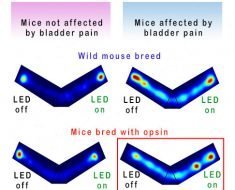In order to propel the contents of the bowel forward the intestines undergo a sequence of rhythmic strong muscular contractions known as peristalsis. These movements are coordinated by a nerve plexus located within the intestinal wall known as enteric nervous system (ENS).
Abnormalities of these neurons lead to the development of slow transit constipation (STC) characterised by decrease in gut motility. This disease was previously known as neuronal intestinal dysplasia (NID).
What are the symptoms of slow transit constipation?
This chronic disorder of the intestines leads to:-
- constipation
- reduced bowel motions
- uncontrollable soiling
- abdominal pain
- nausea
- decreased appetite
Less commonly symptoms like bleeding via rectum, diarrhoea or haemorrhoids (piles) can occur.
Quality of life is severely affected in patients suffering from STC because of lack of control over bowel movements. Patients are constantly anxious of bowel movements in public, are socially withdrawn and have an emotional set back or behavioural disturbances.
Early signs of slow transit constipation
The diagnosis of STC can be made in the early days of life. After birth the baby passes meconium which is a gluey, dark material but not actual faeces. It is a protective layer of mucus covering the intestines internally in the womb.
In babies with STC the passage of meconium is delayed for more than 24 hrs which raises the suspicion of this neuromuscular disorder.
The neurons communicate with the muscle cells through chemical substances called neurotransmitters and the signals are received by receptors. The messages thus transmitted results in muscle contraction and peristalsis. The pathology of this disease is either related to the abnormality or deficiency of theses neurotransmitters or it can be the abnormal position, number or function of the neuronal cells.
Hirschprung disease
Hirschprung disease has a presentation similar to STC. In Hirschprung there is a deficiency of neurons in the rectum, large intestine or both which slows intestinal transit due to lack of effective peristalsis. Differentiation between the two conditions is often difficult and they are also found to coexist in the same person.
Diagnosis of slow transit constipation
An initial assessment is made in chronic constipation. The conventional tests for constipation can miss the diagnosis of STC. These tests include an X-ray of the abdomen that shows distended bowels with faeces or an X-ray with a barium enema. The barium acts as a contrast agent. Real time X-rays during defaecation (defaecating proctography) can exclude certain obstructing reasons of constipation.
The specific test for STC includes a colonic nuclear transit study in which the passage of a swallowed radioactive material is followed. A laproscopic biopsy of the intestine is used for a histopathological diagnosis under the microscope revealing the abnormalities of neurons and muscles.
Treatment of slow transit constipation
There is no definite treatment for STC. Treatment options include:
- Laxatives to enhance gut motility
- Enemas to flush the rectum of faeces
- Interferential electrical stimulation therapy which is found to increase peristalsis decreasing the need for medical or surgical interventions
- Biofeedback teaches patients coordination of pelvic floor and abdominal muscles during defecation
Surgical interventions
Surgical interventions are required when symptoms are too severe to be managed medically. The options include:
- Colostomy, where a segment of colon is diverted and brought out of the abdominal wall to empty into a colostomy bag.
- A caecostomy for regular irrigation and evacuation
- Colectomy, where the colon is removed and small bowel is joined to the rectum
- Sacral nerve stimulation that is supposed to cause neuromodulation of the ENS
However surgical management has its limitations when larger segments of bowel are involved.
Sources
- www.betterhealth.vic.gov.au/…/Slow_transit_constipation.pdf
- www.chronicillness.org.au/index.php/slow-transit-constipation-stc
- colorectalsurgeonssydney.com.au/…/slow-transit-constipation.pdf
- http://link.springer.com/article/10.1007%2Fs11938-002-0050-x#page-1
Further Reading
- All Constipation Content
- What is Constipation?
- Constipation Diagnosis
- Causes of Constipation
- Constipation Treatments
Last Updated: Jun 26, 2019

Written by
Dr. Ananya Mandal
Dr. Ananya Mandal is a doctor by profession, lecturer by vocation and a medical writer by passion. She specialized in Clinical Pharmacology after her bachelor's (MBBS). For her, health communication is not just writing complicated reviews for professionals but making medical knowledge understandable and available to the general public as well.
Source: Read Full Article





